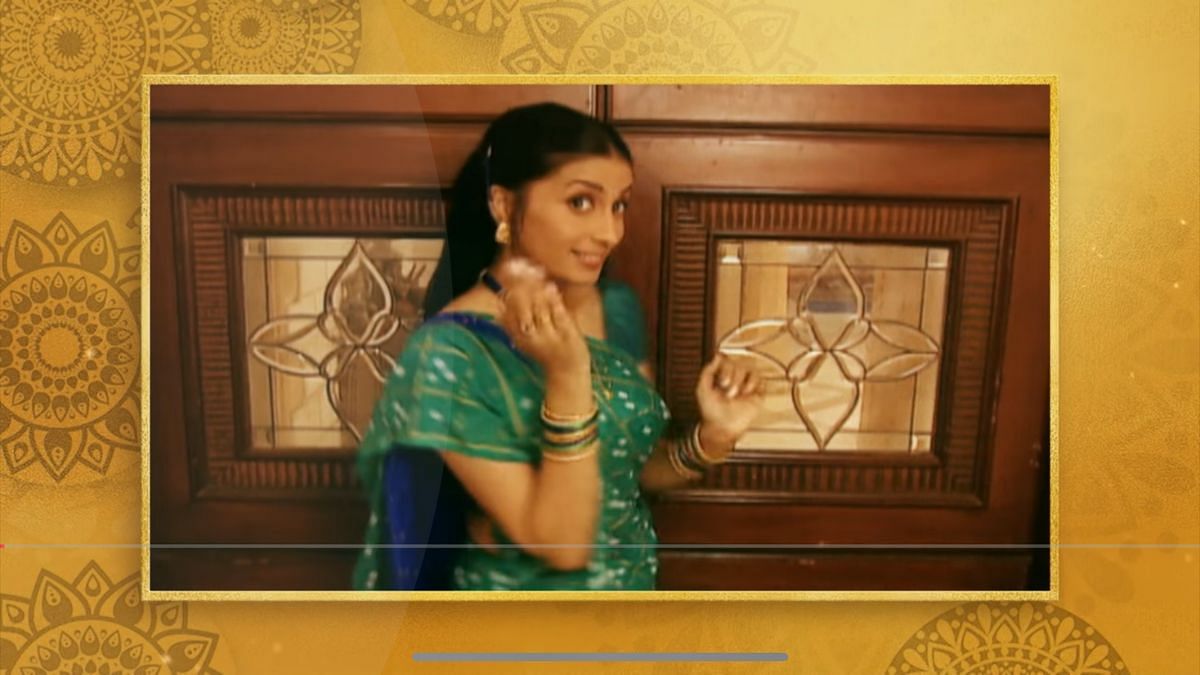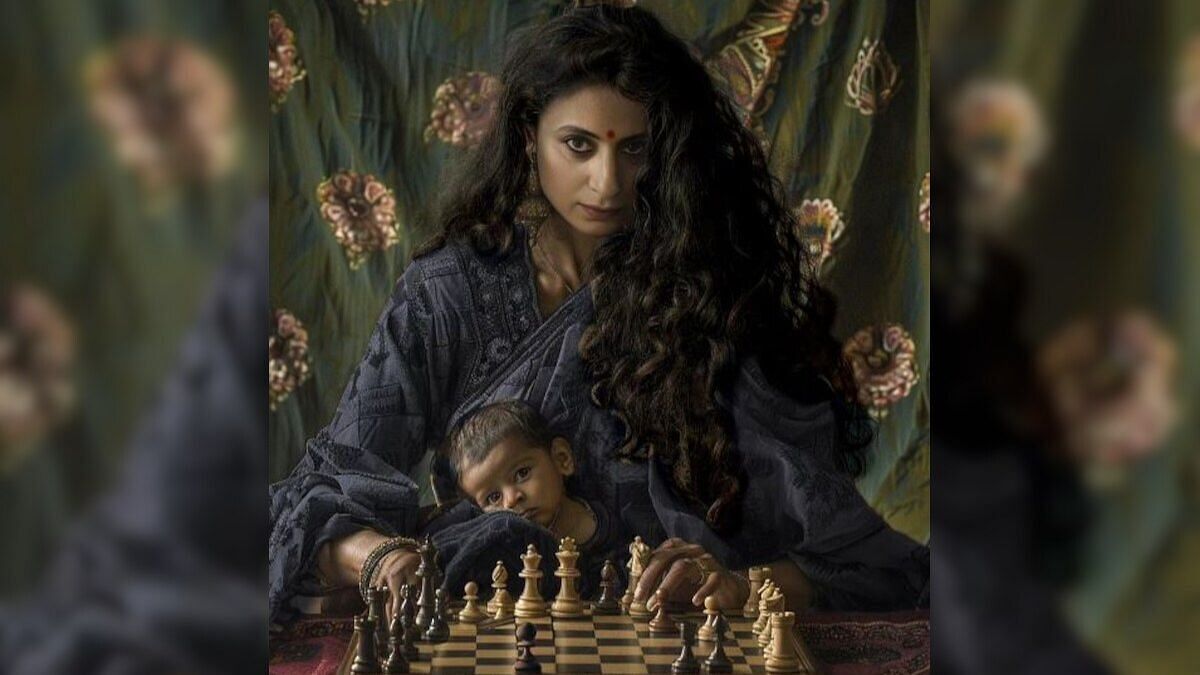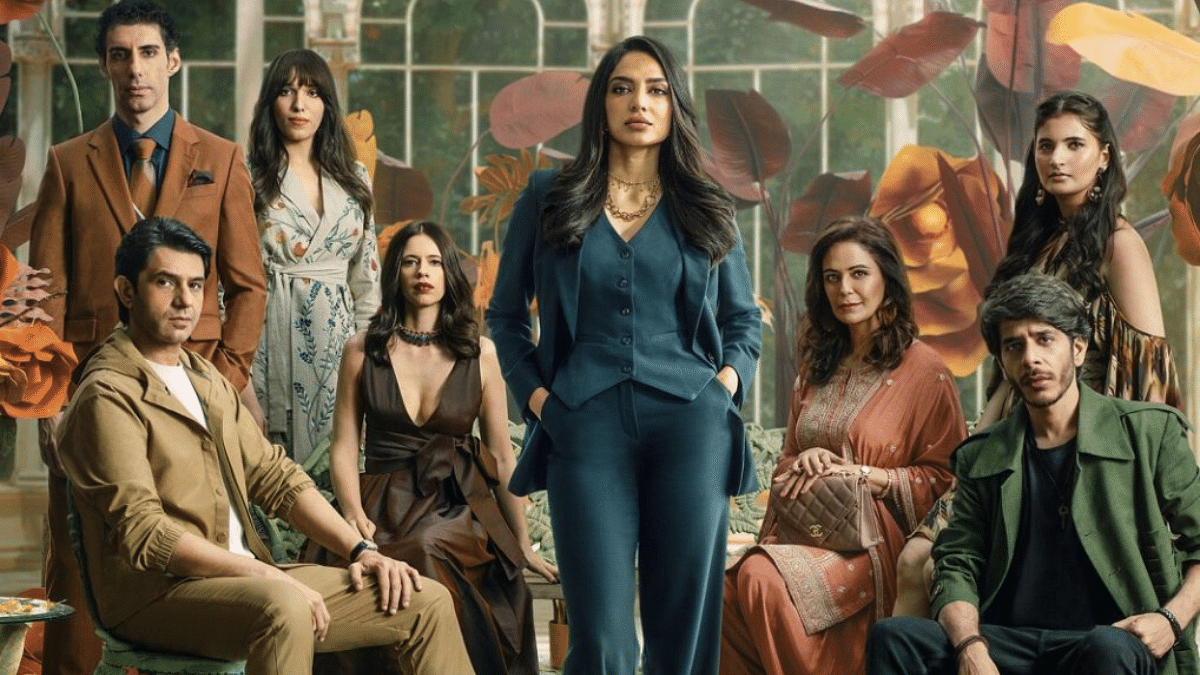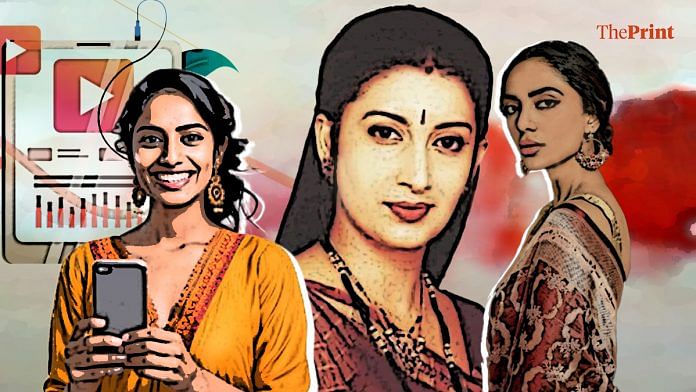New Delhi: When the familiar jingle of Kyunki Saas Bhi Kabhi Bahu Thi played on TV in the early 2000s, Tulsi—the dutiful ‘Virani bahu’ played by Smriti Irani—welcomed viewers inside her sprawling mansion. Though serviced by several caretakers, the credit for this grand house’s upkeep went solely to Tulsi. It was the beginning of a template that defined Indian TV soaps for years to come. Every bahu wanted to be Tulsi, and every saas wanted a daughter-in-law like her. But in 2025, the Indian bahu has changed–she makes Instagram reels, goes to work, even runs her own business. So, when Ekta Kapoor’s magnum opus returns on 29 July, it’s the bahu’s re-entry that will be watched closely by fans both old and new.
“The independent woman, who had a job, who did not take nonsense from anyone, was presented as a scheming vamp-like figure and pitted against the small-town, almost virginal bahu (in Ekta Kapoor’s serials),” said Karanjeet Kaur, journalist, former editor of Arré, and a partner at TWO Design. “It is also interesting that the creator is at complete odds with the women represented in her shows–an empowered woman who runs a business empire, who worked in a male-dominated industry,” added Kaur, who writes frequently on gender justice and equality.
Kyunki Saas Bhi Kabhi Bahu Thi codified the ideal bahu—as one who wore sarees and mangalsutras, cooked delicious food, and held the fort in times of crisis. These women were self-effacing, willing to go to any lengths for their families. Their foil was the vamp–the ‘cunning’ woman who was no good in the kitchen, had a ‘henpecked’ husband, and dared to set boundaries with her in-laws.

From Tulsi in KSBKBT to Prerna in Kasautii Zindagii Kay and Archana in Pavitra Rishta—Ekta Kapoor’s bahus took over primetime television. Families laughed and wept with them, and young women copied their style. These on-screen daughters-in-law had families expecting the same from their own bahus. The reason was that they made their husbands and families a top priority—even at the cost of their own freedom, joy, and dignity. They thwarted conspiracy after conspiracy in heavy makeup and jewellery, enduring immature husbands and conservative mothers-in-law without breaking a sweat.
The independent woman, who had a job, who did not take nonsense from anyone, was presented as a scheming vamp-like figure and pitted against the small-town, almost virginal bahu (in Ekta Kapoor’s serials) – Karanjeet Kaur, journalist & columnist
Ahead of KSBKBT’s release on 29 July, Ekta Kapoor shared a lengthy post on Instagram, detailing why she chose to bring it back in limited format after 25 years: “The abrupt ending of the show lingered in our minds…I thought to myself, can we keep it away from today’s storytelling formats and focus once again on the issues television bravely addressed and dealt with? Can we utilise the most beloved and integrated platform in India, television, to tell a story that resonates and educates, while also providing equal amounts of entertainment?”
Did TV bahus evolve?
The fate of Ekta Kapoor’s bahus hinged on television ratings. “Kapoor was making massive strides on television, with shows on the top three channels–Star Plus, Zee TV, and Sony. No one wanted to break away from the formula that worked,” said a screenwriter who did not wish to be named.
The most subservient TV bahus, who protested only under extreme circumstances, were preferred across the board—particularly in smaller towns and cities.
“One of the first papers I wrote in college was a detailed critique of K serials. But now, when I look back at it, it seems so naive and high-minded. I was criticising the shows from a very privileged position and could look down upon them, since the women in my family have always worked, provided for their families, and been very independent. That is not the reality of most of India,” said Karanjeet Kaur.
The bahus did get a makeover by the 2010s. Zoya (Surbhi Jyoti) in Qubool Hai (2012) wore Western outfits and was comfortable around technology. In Ishaqbaaaz (2016), Annika (Surbhi Chandna) married into a rich family, but never shied away from speaking her mind.
The changes, if any, in TV bahus are mostly cosmetic. The pallu is gone, and outfits have become contemporary. Even if bahus are shown working, the women are dependent on the men. Kitchen and childcare are still shown as their forte. Anupamaa (2020), which started off with the promise of being progressive, went back to the protagonist’s life revolving around having a man in her life – Falguni Vasavada, TEDX speaker and professor at MICA
But the empowered bahu formula didn’t work with Indian television audiences. The ‘simple and homely’ girl drew in higher TRPs, prompting makers to return to formulaic depictions.
“Gopi bahu (Giaa Manek), who washes a laptop (in Saath Nibhaana Saathiya) is remembered, but the tech-savvy Zoya is forgotten,” said the screenwriter who did not wish to be named.
For the working bahu concept to work, makers had to ensure that she bent over backwards to prioritise her husband and family. Diya Aur Baati Hum (2011) showed an educated woman—who eventually became an IPS officer—forcibly married to an illiterate halwai. And her goal throughout the series was to make her mother-in-law happy.
“The changes, if any, in TV bahus are mostly cosmetic. The pallu is gone, and outfits have become contemporary. Even if bahus are shown working, the women are dependent on the men. Kitchen and childcare are still shown as their forte. Anupamaa (2020), which started off with the promise of being progressive, went back to the protagonist’s life revolving around having a man in her life,” said Falguni Vasavada, a TEDX speaker and professor at the Mudra Institute of Communications (MICA) in Ahmedabad.
It was the OTT bahu who eventually pushed the envelope—a woman unafraid of asserting her independence; a woman with flaws, and even traces of criminality.
Also read:
The bahus on OTT
Tara (Sobhita Dhulipala) of the 2019 Amazon Prime show Made in Heaven is a play on the ‘scheming bahu’ who claws her way up the social ladder in South Delhi. A shrewd entrepreneur who runs a wedding planning firm and is married to businessman Adil Khanna (Jim Sarbh), Tara’s designer wardrobe is an eclectic mix of sarees, stylish dresses, and bikinis. While she expresses great desire to be a mother, Tara refuses to play ball when her husband has an affair – upending her marriage and even taking Adil’s family home as divorce settlement.
On the other end of the spectrum are mob wives – like the bahus of Mirzapur (2018). Beena Tripathi (Rasika Duggal) is the much-younger second wife of gangster ‘Kaleen Bhaiya’ (Pankaj Tripathi), who hardly takes interest in her. When her father-in-law assaults and impregnates her, Beena strikes back by not just killing him but also joining hands with the family’s rivals to protect her child’s future. And she is unapologetic about her actions.

In the same show, Madhuri Yadav (Isha Talwar) – a politician and the wife of Kaleen Bhaiya’s son Munna Tripathi (Divyenndu) –refuses to let her husband’s death affect her ambitions or sexuality.
Like TV bahus, the characters of OTT bahus are often cast with commercial compulsions in mind, their shades often heightened to the point of looking unreal. As more people choose to consume content on social media, reels and short videos are determining how the new-age bahu looks, walks, cooks, or even dances.
Also Read: Ekta Kapoor is taking a leap in the dark. Will India embrace Balaji’s bahu in 2025?
Bahus on reels
In certain Gen Z circles, there is a revival of the same behaviour that once defined a ‘good bahu’. Terms like ‘demure’ are now fashionable, and ‘trad wives’ and ‘proud housewives’ have resurfaced.
But the source of such content has shifted—it’s not TV or OTT but self-shot, aesthetic videos by young women on social media. Unpaid labour is being glorified through Instagram filters in 30-second reels.
“Some married women, as young as 21, are showcasing their traditional life on screen, almost making it look aspirational. In a society where marriage and motherhood are seen as markers of women’s ‘success’, this content is not just problematic but also sets back years of work for women’s rights,” said Falguni Vasavada.

Many young women now glorify cooking for their husbands, with captions like ‘pack my husband’s lunchbox with me’. Millennials, on the other hand, are increasingly opting for the ‘she can do both’ trope. In these videos, women are shown transitioning swiftly from ‘party girls’ to coy bahus draped in sarees and hidden behind ghoonghats.
“There is extreme aestheticisation and glamourisation of ‘can women have it all’. But at the end of the day, the burden falls on women—not just at work but also at home,” said Kaur. “It could also be a way of dealing with her reality, an outlet of sorts.”
The return of Kyunki Saas Bhi Kabhi Bahu Thi seems to have revived the yearning for subservient daughters-in-law, even as women in real life have changed–working, choosing higher education, and opting out of motherhood.
“It could simply be a case of cyclical movement. Just like now the world over, conservatism is replacing liberalism, the original good bahu on screen is also making a comeback. But we will know more once the show is out,” said Kaur.
(Edited by Zoya Bhatti)






